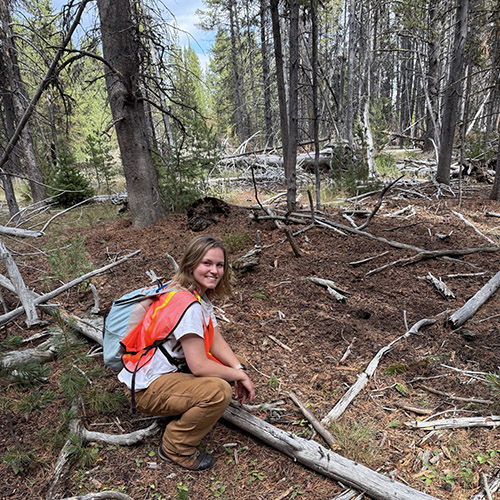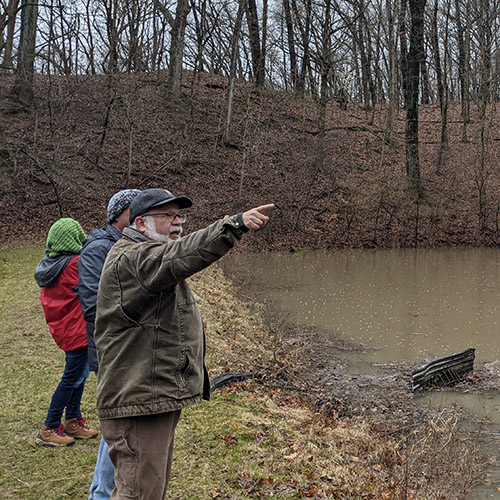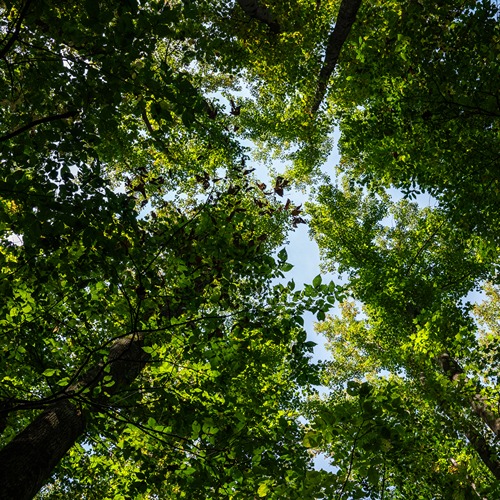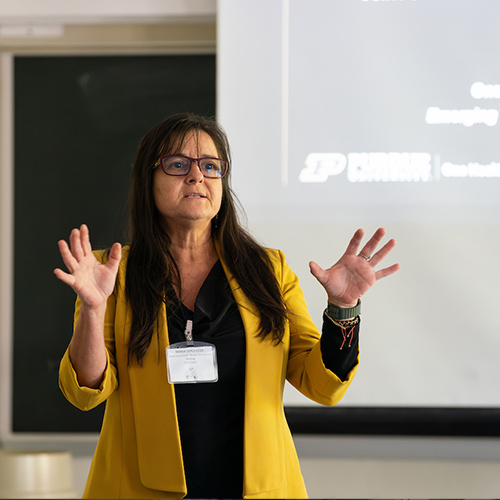Research from DeWoody Lab Aims to Use DNA to Age Wildlife
For decades, wildlife biologists have been using physical observations, such as tooth wear, to age deer and other species. But what if there was a more exact and efficient, quantitative method that varied less from observer to observer? Dr. Andrew DeWoody, professor of wildlife and fisheries genetics, aims to find out if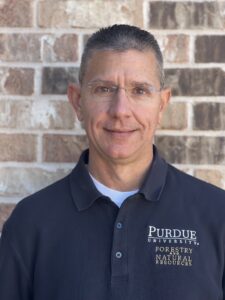 DNA is a viable option for determining age with help from a new grant “Testing and Validation of Telomere-Based Age Estimates in Wildlife” funded by the Indiana Department of Natural Resources Division of Fish and Wildlife.
DNA is a viable option for determining age with help from a new grant “Testing and Validation of Telomere-Based Age Estimates in Wildlife” funded by the Indiana Department of Natural Resources Division of Fish and Wildlife.
The more than $250,000 project, which began in earnest in May, will look at DNA degradation over time. Specifically, researchers will measure structures called telomeres, located at the ends of the chromosomes, which biologists have recently realized get shorter as individuals age.
“Telomeres are like the aglets on the end of your shoelaces, which are there to keep them from coming unraveled,” DeWoody explained. “There are these repetitive sequences, whose sole function seem to be to keep the chromosomes from unraveling. Chromosomes are complex, three-dimensional structures and like everything, they degrade over time. We know that in humans they are longer in babies than they are in the elderly, but this has not really been critically evaluated in wildlife species for aging things like deer. This grant is to test whether or not we can get DNA, from a deer carcass or shed antlers or any kind of biological tissue containing DNA, and measure the lengths of the telomeres and from that infer the age of the donor sample.”
To do so, DeWoody and master’s student Julia Buchanan-Schwanke, will be collecting samples from a captive deer herd maintained by the Texas Parks and Wildlife Department, as well as a colony of captive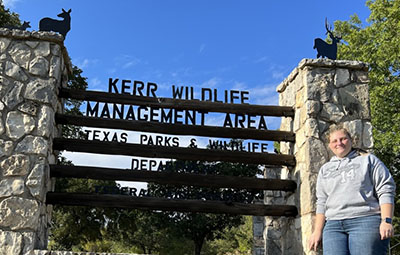 coyotes, which are maintained by the Utah Field Station of the National Wildlife Research Center, the research branch of USDA APHIS Wildlife Services. In both cases, the ages of the animals are known as they are tagged and tracked from birth.
coyotes, which are maintained by the Utah Field Station of the National Wildlife Research Center, the research branch of USDA APHIS Wildlife Services. In both cases, the ages of the animals are known as they are tagged and tracked from birth.
Buchanan-Schwanke, a 2018 wildlife alumna, began working in the Indiana Department of Natural Resources’ Division of Fish and Wildlife shortly after graduating. Her work in the division’s deer program began in July 2019, with the majority of her work involving disease monitoring in wild deer, mainly with Chronic Wasting Disease (CWD) and Epizootic Hemorrhagic Disease (EHD). Over the last two years, she has aided in development and management of a program with taxidermists across the state to effectively receive higher-quality samples for CWD testing. During the mid- to late-summer, she managed a public reporting system put in place to sample suspect deer for EHD.
“Since 2020, I have been involved with the data analysis the deer program conducted for the annual White-tailed Deer Report. During these analyses I came to the realization of how much estimated age is actually used in the practice of wildlife management techniques, such as the spread of CWD being influenced by the age of deer,” Buchanan-Schwanke said of her excitement about the prospects of the project and how it fits into her past research. “When I heard about the possibility of this new aging project, I was elated to become involved in what may turn out to be such a huge discovery. I am not only excited to incorporate my previous work with deer from my time with the Indiana DNR, but also to be back at Purdue for this new opportunity. To say I am delighted to be aiding the wildlife community in the progress of less invasive and hopefully more accurate aging techniques is an understatement.”
Genetic markers will be characterized from each species, blood samples will be collected from individual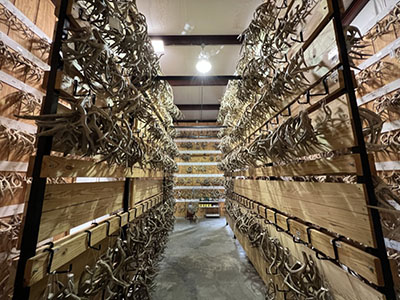 animals and DNA from each sample will be analyzed to determine whether telomeres decay with age as they do in humans. If so, additional tests will determine how much precision can be expected in the aging estimates and what types of samples might be viable.
animals and DNA from each sample will be analyzed to determine whether telomeres decay with age as they do in humans. If so, additional tests will determine how much precision can be expected in the aging estimates and what types of samples might be viable.
“There is a good theoretical basis for it, but we have no real idea if this is going to work or, if it does, how specific it will be or how much precision we are going to have,” DeWoody said. “There is going to be some pattern and that might be enough, but deer and coyote only live to be five to eight years on average in the wild. Ideally, we would be able to get it down to a year but it may just be adults and sub-adults. The ultimate goal is to see if we can use DNA to measure age in every species, to determine the clock for each species to see how fast telomeres degrade. We will start with deer and coyote, but it could go on to be used for fish or wild turkey or bears, a lot of other organisms.”
If effective, the application of the research could change the way wildlife biologists determine aging from subjective to an exact science.
“Right now, deer are aged using tooth wear, based on a paper published in 1949 and it is very subjective,” DeWoody said. “If you go to a deer check station and hunters bring in a deer, biologists feel and look at the teeth and judge the age. There is a lot of uncertainty and it is very imprecise with a lot of variation between biologists. But, age is important for demographic modeling. If this (DNA aging) works, when you have deer carcasses come through a check station, you could just swab the cheeks to get epithelial cells or take blood or tissue, and take them back to the lab and in a couple of hours know something about their age. You would hopefully have much more precise data on the age structure of the herd, which is important for monitoring populations and need for harvest.”
Measuring telomeres in deer and coyotes of captive populations will offer a proof of concept. Once a patter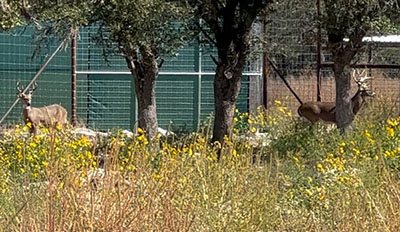 n is observed on species of known-age, the same process can be duplicated for environmental and other factors.
n is observed on species of known-age, the same process can be duplicated for environmental and other factors.
“Once we generate a distribution of telomere lengths for all of these different aged deer from Texas, in a perfect world, we will have a beautiful graph that shows that deer of this age have telomeres this long and so on, and then we would then test it in a wild population,” DeWoody explained. “We also will compare fresh samples with DNA from older samples that we have from the captive population to see at what point the DNA is no longer usable. Can we still get DNA from a deer skull that someone finds on the ground in the forest that has been there for two years? If so, can we test it and say how old that animal was when it died? We also can look at telomere lengths in association with environmental quality. Are there differences in DNA length in drought years vs. good years and how much does environment matter relative to age class?”
After completing the DNA testing on the captive herd, the next step will be to test samples of a wild population on a yearly basis in a given location that has a history of population monitoring.
“The next project would be to look at a wild herd that has experienced the same amount of hunting intensity over 10 years and where the herd has experienced similar environmental affects, and test samples from that population year after year and see if the age structure is the same every year. If this testing works like it does with DNA testing for sexing, you can train someone to process hundreds of samples a day, which would help each state create age structured models, which will help with population monitoring for a variety of species.”
Purdue extension wildlife specialist Jarred Brooke says the possibilities are endless if the DNA aging is effective.
“If you can determine age effectively from DNA samples, it would have broad implications to not only fish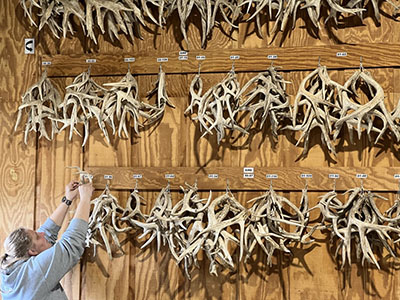 and wildlife agencies, but also private landowners and hunters,” Brooke said. “There are several techniques to age various wildlife species, but DNA could remove some subjectivity from available methods, which would provide more reliable information to biologists and decision-makers. And for those species for which it’s difficult to tell age from physical observations or reliable techniques don’t exist, this could open the door to estimating the age structure of populations for those species. The age of harvested wildlife like white-tailed deer is also of interest to hunters and private landowners who manage their property for wildlife. This technique could provide them with reliable information about wildlife they harvest and would provide them with more information to better manage wildlife populations on their property.”
and wildlife agencies, but also private landowners and hunters,” Brooke said. “There are several techniques to age various wildlife species, but DNA could remove some subjectivity from available methods, which would provide more reliable information to biologists and decision-makers. And for those species for which it’s difficult to tell age from physical observations or reliable techniques don’t exist, this could open the door to estimating the age structure of populations for those species. The age of harvested wildlife like white-tailed deer is also of interest to hunters and private landowners who manage their property for wildlife. This technique could provide them with reliable information about wildlife they harvest and would provide them with more information to better manage wildlife populations on their property.”
Upon completion of the research, Brooke, who is a co-principal investigator on the Integrated Deer Management Project and co-PI on this project, will work to educate the public as well as conservation partners on the DNA aging process and possible applications.
“The first step is researching if this technique will work,” Brooke explained. “If it does, then comes the task of determining how it can be used within wildlife conservation and getting this information in the hands of the people who could use the technique.”

